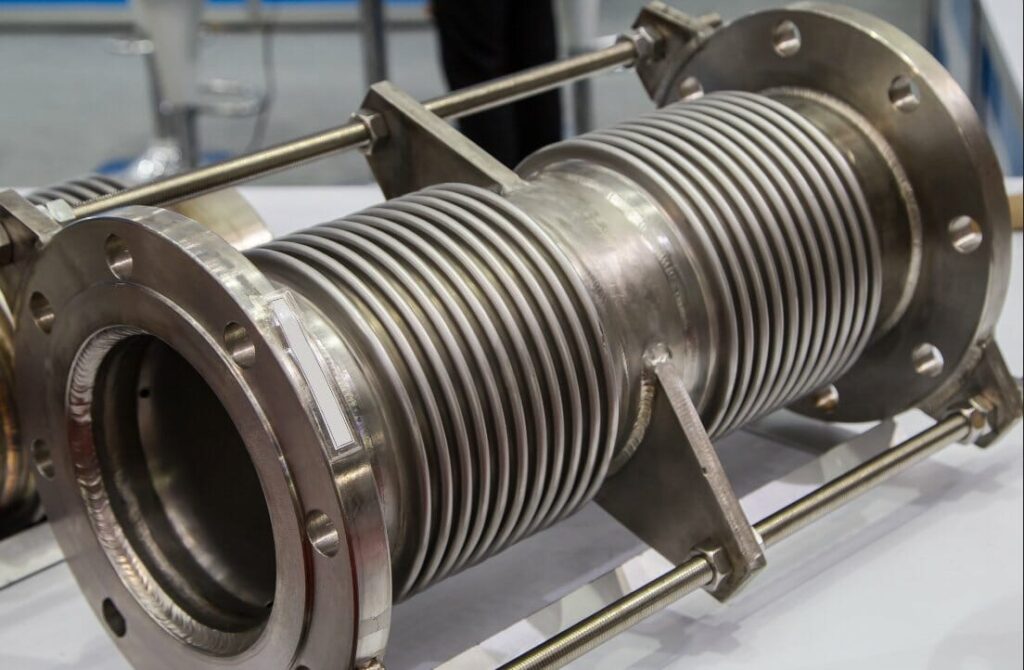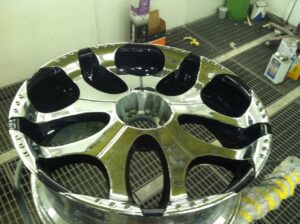
In industries where pipelines, duct systems, or equipment are exposed to extreme temperatures, vibrations, or pressure fluctuations, ensuring structural flexibility is critical. That’s where metallic expansion joints come into play. These essential components absorb movement, reduce stress on pipes, and extend the lifespan of entire systems. From power generation and petrochemical plants to HVAC systems and marine engineering, metallic expansion joints provide the flexibility and durability that modern industries depend on.
This comprehensive guide explores what metallic expansion joints are, how they work, the various types available, and why they are indispensable for high-performance industrial operations.
What Are Metallic Expansion Joints?
Metallic expansion joints are flexible connectors designed to absorb mechanical and thermal movements in piping systems. They are typically made of high-grade metals such as stainless steel, Inconel, or Monel, which allow them to withstand extreme temperature, pressure, and corrosion conditions.
The core component of these joints is a bellows, which is an elastic, corrugated element that expands and contracts to absorb movement. When pipes expand or contract due to heat, vibration, or mechanical shifts, the bellows compensate for this movement, thereby protecting the system from stress or damage.
Key Functions of Metallic Expansion Joints
Metallic expansion joints serve several critical purposes in industrial systems:
-
Absorb Thermal Expansion and Contraction
When temperatures fluctuate, metal pipes expand or contract. Expansion joints absorb these dimensional changes, preventing cracks and leaks. -
Reduce Vibration and Noise
They help isolate vibration produced by pumps, compressors, or engines, ensuring smoother operation and minimizing noise transmission. -
Compensate for Misalignment
Installation errors or shifting foundations can lead to slight misalignments in piping systems. Expansion joints can correct minor misalignments without compromising system integrity. -
Protect Equipment and Structures
By relieving stress, they help extend the service life of pumps, valves, and other connected components.
Types of Metallic Expansion Joints
Metallic expansion joints come in various configurations to handle different movements and installation needs. Below are the most commonly used types:
1. Axial Expansion Joints
These joints are designed to absorb movements along the pipe’s longitudinal axis—essentially expansion or contraction in a straight line. They’re ideal for pipelines that experience frequent temperature fluctuations.
2. Lateral Expansion Joints
Lateral joints absorb movement perpendicular to the pipe’s axis. They are often used in systems with complex routing where pipes move side to side due to thermal or seismic activity.
3. Angular Expansion Joints
These are designed to handle angular rotation around a fixed point. They are often installed in pairs or sets to manage large directional changes in piping systems.
4. Universal Expansion Joints
Combining the features of axial and lateral types, universal expansion joints can accommodate multiple movement directions simultaneously. They are ideal for systems that undergo multi-axis motion or complex movement patterns.
5. Pressure Balanced Expansion Joints
These advanced joints neutralize pressure thrust while still absorbing axial or lateral movements. They are often used in systems where anchors and supports are limited or where structural load must be minimized.
Materials Used in Metallic Expansion Joints
The performance and longevity of metallic expansion joints depend greatly on the material used in their construction. Common materials include:
-
Stainless Steel (304, 316, 321, 347): Excellent corrosion resistance and durability.
-
Inconel and Monel: Superior for high-temperature or chemically aggressive environments.
-
Nickel Alloys: Used in nuclear or aerospace applications for their exceptional resilience.
-
Carbon Steel: Suitable for general industrial use where corrosion risk is minimal.
The choice of material depends on the specific operating environment—temperature range, chemical exposure, and pressure levels.
Applications of Metallic Expansion Joints
Metallic expansion joints are used across multiple industries, each with unique demands for flexibility and reliability.
1. Power Generation
In power plants, expansion joints handle thermal expansion in high-temperature steam lines and exhaust systems, ensuring safe and efficient energy transmission.
2. Oil and Gas
Used in refineries, pipelines, and offshore platforms, they help manage pressure changes and absorb vibration from heavy machinery.
3. Chemical and Petrochemical Plants
These joints resist corrosion from aggressive chemicals while compensating for temperature-related movement in process lines.
4. HVAC Systems
In heating, ventilation, and air conditioning systems, metallic expansion joints minimize noise and vibration while accommodating thermal expansion in ductwork.
5. Marine and Shipbuilding
They’re used in exhaust systems, ballast piping, and propulsion lines, providing flexibility under variable load and vibration conditions.
6. Aerospace and Defense
Specialized versions are designed for extreme environments, including jet engines and spacecraft systems.
Advantages of Metallic Expansion Joints
-
High Durability – With proper maintenance, metallic joints can last for decades under demanding conditions.
-
Temperature Resistance – Suitable for cryogenic as well as high-temperature applications.
-
Corrosion Protection – Resistant to a wide range of chemicals and fluids.
-
Space Saving – Compact design makes them ideal for installations with limited space.
-
Cost Efficiency – Reduces the need for complex pipe routing and heavy anchoring systems.
Installation and Maintenance Tips
Proper installation and regular maintenance are vital for maximizing the performance of metallic expansion joints.
-
Alignment: Ensure accurate alignment during installation to prevent stress on the bellows.
-
Anchoring and Guides: Properly place anchors and guides to control movement direction.
-
Inspections: Regularly inspect bellows for fatigue, corrosion, or deformation.
-
Cleaning: Keep joints free from debris and contaminants that can cause abrasion or premature failure.
-
Replacement Schedule: Replace aging or worn-out joints promptly to maintain safety and performance.
Choosing the Right Metallic Expansion Joint
When selecting a metallic expansion joint, consider the following parameters:
-
Temperature and Pressure Range
-
Type and Magnitude of Movement (axial, lateral, or angular)
-
Media Compatibility (gas, steam, chemicals, etc.)
-
Space Availability and Installation Constraints
-
Compliance with Industry Standards (EJMA, ASME, or ISO)
Consulting a manufacturer or supplier with expertise in metallic expansion joints design—like Hose Master—ensures the product aligns with your operational needs and safety requirements.
Conclusion
Metallic expansion joints are unsung heroes of industrial piping systems. They provide the flexibility and protection needed to maintain structural integrity under harsh conditions, from high pressure and temperature to vibration and misalignment. Whether used in power plants, chemical facilities, or HVAC systems, these components play a pivotal role in ensuring safety, reliability, and performance.
By choosing the right design, material, and installation practices, industries can significantly enhance efficiency and reduce maintenance costs—making metallic expansion joints an investment that delivers long-term value.



